This article was co-authored by Catherine Cheung, DPM. Dr. Catherine Cheung is a board certified Podiatrist based in San Francisco, California. Dr. Cheung specializes in all aspects of foot and ankle care, including complex reconstruction. Dr. Cheung is affiliated with the Brown & Toland Physicians and the Sutter Medical Network. She earned a DPM from the California College of Podiatric Medicine, completed her residency at the Encino Tarzana Medical Center, and completed a fellowship at the Kaiser Permanente San Francisco Medical Center. She is board certified by the American Board of Podiatric Surgery.
wikiHow marks an article as reader-approved once it receives enough positive feedback. This article has 26 testimonials from our readers, earning it our reader-approved status.
This article has been viewed 4,991,323 times.
Foot blisters can occur due to friction between your feet and shoes. This is usually the result of excess moisture on the skin. Blisters are usually not serious and can be treated at home with antibiotic creams and bandages. Note that it is usually best to let a blister heal on its own, but very painful blisters can be popped with the right tools and proper sanitary practices.
Steps
Reducing Pain and Complications
-
1Cover your blister. Foot blisters should be covered to reduce irritation and cut back on the risk of infection. Cover your blister with a soft dressing, like gauze or a loose bandage. If the blister is very sore, cut your dressing into a donut shape and place it around the blister to avoid putting pressure directly on it.[1]
- If your blister is just a superficial irritation on your skin, you may only need to cover it with a bandage and leave it alone. It should dry out and be fine after a couple of days.[2]
- Your dressing should be changed each day. Always wash your hands before touching the dressing and the area around the blister.
-
2Use antibiotic ointment or petroleum jelly. Antibiotic ointment helps prevent infections in a blister. You can buy antibiotic ointment at a pharmacy. Apply it to the blister as directed, especially before you put on your shoes or socks. Just petroleum jelly may also be used.[3]
- Remember to wash your hands thoroughly before touching the blister.
Advertisement -
3Try powders and creams to reduce friction. Friction can make a blister worse and increase pain. In order to reduce friction on a foot blister, pick up a powder designed for your feet at a local pharmacy. Pour it into your socks before putting on your shoes to reduce pain.[4]
- Not all powders work for everyone. If a powder causes your blister to become irritated, stop using it.
-
4Care for your feet while the blister persists. Take extra precautions to keep your feet comfortable while a blister is healing. Wear an extra pair of socks and loose-fitting shoes as the blister persists. More padding can help you feel more comfortable when you're walking, which may help the blister heal more quickly.[5]
- You should also try to stay off your feet as much as possible while the blister is healing.
- Try changing your socks twice a day to help decrease the possibility of blisters, usually cotton socks are better than polyester.
-
5Protect a burst blister from infection. Unless a blister becomes extremely painful, it's best not to drain it yourself. This can increase your likelihood of developing an infection. Let the blister's skin peel on its own. Avoid touching or irritating the blister to prevent it from popping prematurely.[6]
- Use a moleskin over the blister to protect it if you must walk on it.
Draining a Blister
-
1Wash your hands. In rare cases, you can pop an extremely sore blister on your own. You should only do this if the pain becomes debilitating. Before popping a blister, wash your hands thoroughly with antibacterial soap and water. You should never touch a blister with dirty hands.[7]
- Only drain a blister if it's a large area that's filled with fluid. If it's small or minor, let it heal on its own.
-
2Clean the blister. Before popping your blister, clean the area around it with water. Using alcohol, hydrogen peroxide or iodine can slow healing.
-
3Sterilize the needle. You will use a sewing needle to pop the blister, but this should be sterilized first to prevent infection. Wipe the needle down with rubbing alcohol, which you can purchase at a local drugstore.[8] You can dab rubbing alcohol from a bottle onto a cotton swab or use rubbing alcohol pads.
- Alternatively you can sterilize the needle by running it through an open flame until it turns red. Use something to grasp the needle when you do this like Kelly clamps, since the needle will become very hot.
-
4Puncture the blister. Take the needle and gently insert it into the blister. Puncture it several times, near the edge of the blister. Allow the fluid to drain out naturally while you leave the skin covering the blister in place.[9]
- Do not remove the skin from the top of the blister. Just drain the fluid, then cover the blister with a bandage. That piece of skin will eventually dry up and fall off on its own.[10]
-
5Apply an ointment. Once you've drained the blister, apply an ointment to it. You can use Vaseline or Plastibase, both of which can be purchased at a drugstore. Use a clean cotton swab to rub the ointment over the blister.[11]
- Some ointments may irritate a blister. If you notice any signs of a rash, cease use of your ointment.
-
6Cover the blister. Place a piece of gauze or a bandage over the blister. This will protect it from infection while it heals. Change the dressing twice a day and, when you change it, add new ointment.[12]
- Remember to wash your hands before touching your blister.
Seeking Medical Help
-
1See a doctor if you notice complications. Most blisters heal on their own. However, complications warrant a trip to the doctor. If you notice any of the following complications, make an appointment with your doctor:[13]
- A painful, red, and hot blister or a blister with red streaks
- Yellow or green pus
- A blister that keeps coming back
- Fever
- Having diabetes, heart conditions, auto immune disorders, HIV or undergoing chemotherapy can make your blister rapidly become worse, causing sepsis or cellulitis.
-
2Rule out underlying conditions. Most foot blisters are benign. However, some blisters can be caused by underlying conditions like chicken pox and should be treated differently. Depending on your other symptoms, your doctor may want to run some tests to rule out underlying conditions before addressing your blister. If an underlying condition causes your blister, your doctor will advise you how to treat it.[14]
-
3Follow your doctor's treatment plan. Depending on the cause of the blister, your doctor will form a treatment plan for you. Follow all of your doctor's instructions closely and ask your doctor any questions you have before leaving the office.[15]
Preventing Blisters
-
1Avoid wearing the shoes that caused a blister. If your blister came in response to a new type of shoe, or a very uncomfortable shoe, stop wearing the shoes that caused it. Purchase shoes that leave your feet with some wiggle room and fit comfortably. Wearing the right shoes can prevent a future blister.
- Also make sure that you wear the right type of shoes for the activity you're engaging in. For example, you can help prevent foot blisters when running by wearing running shoes.
- Try to figure out exactly what's causing the abnormal motion that's causing your blister. For instance, it could come from a fold in your sock, or from an ill-fitting shoe.[16]
-
2Add moleskin or padding to your shoes. Attach a small bit of moleskin or padding to the inside of your shoes, particularly the sole, or the areas where your shoes rub against your feet. Moleskin can provide some padding and cut back on friction and irritation that causes blisters.[17]
-
3Wear moisture-wicking socks. Moisture can cause blisters or make existing blisters worse. Invest in a pair of moisture-wicking socks. These will absorb sweat from your feet and cut back on blisters and other injuries.[18]
Expert Q&A
Did you know you can get expert answers for this article?
Unlock expert answers by supporting wikiHow
-
QuestionDoes it heal faster if you pop it?
 Marsha Durkin, RNMarsha Durkin is a Registered Nurse and Laboratory Information Specialist for Mercy Hospital and Medical Center in Illinois. She received her Associates Degree in Nursing from Olney Central College in 1987.
Marsha Durkin, RNMarsha Durkin is a Registered Nurse and Laboratory Information Specialist for Mercy Hospital and Medical Center in Illinois. She received her Associates Degree in Nursing from Olney Central College in 1987.
Registered Nurse
-
QuestionWhat are some immediate steps to take if someone has a blister forming?
 Catherine Cheung, DPMDr. Catherine Cheung is a board certified Podiatrist based in San Francisco, California. Dr. Cheung specializes in all aspects of foot and ankle care, including complex reconstruction. Dr. Cheung is affiliated with the Brown & Toland Physicians and the Sutter Medical Network. She earned a DPM from the California College of Podiatric Medicine, completed her residency at the Encino Tarzana Medical Center, and completed a fellowship at the Kaiser Permanente San Francisco Medical Center. She is board certified by the American Board of Podiatric Surgery.
Catherine Cheung, DPMDr. Catherine Cheung is a board certified Podiatrist based in San Francisco, California. Dr. Cheung specializes in all aspects of foot and ankle care, including complex reconstruction. Dr. Cheung is affiliated with the Brown & Toland Physicians and the Sutter Medical Network. She earned a DPM from the California College of Podiatric Medicine, completed her residency at the Encino Tarzana Medical Center, and completed a fellowship at the Kaiser Permanente San Francisco Medical Center. She is board certified by the American Board of Podiatric Surgery.
Board Certified Podiatrist First, you have to figure out what's causing the blister and stop it. If it's just a superficial irritation, you can just cover it bandage with a bandage to keep it from being painful. If it's a larger area that has fluid in it, you may need to drain it with a sterilized needle to get the fluid out, then cover it with a bandage until it dries up and heals.
First, you have to figure out what's causing the blister and stop it. If it's just a superficial irritation, you can just cover it bandage with a bandage to keep it from being painful. If it's a larger area that has fluid in it, you may need to drain it with a sterilized needle to get the fluid out, then cover it with a bandage until it dries up and heals.
Warnings
- Do not use a match to sterilize the instrument that you will use to pierce the blister.⧼thumbs_response⧽
- See a physician if you are running a fever, your blister does not heal, appears to be getting worse or infected, very red, feels hot or has pus inside.⧼thumbs_response⧽
References
- ↑ http://www.nhs.uk/Conditions/Blisters/Pages/Treatment.aspx
- ↑ Catherine Cheung, DPM. Podiatrist. Personal interview. 12 May 2020.
- ↑ https://www.mayoclinic.org/first-aid/first-aid-blisters/basics/art-20056691
- ↑ https://health.clevelandclinic.org/5-ways-to-avoid-blisters-and-the-best-ways-treat-them/
- ↑ Catherine Cheung, DPM. Podiatrist. Personal interview. 12 May 2020.
- ↑ http://www.nhs.uk/Conditions/Blisters/Pages/Treatment.aspx
- ↑ http://www.mayoclinic.org/first-aid/first-aid-blisters/basics/art-20056691
- ↑ http://www.mayoclinic.org/first-aid/first-aid-blisters/basics/art-20056691
- ↑ http://www.mayoclinic.org/first-aid/first-aid-blisters/basics/art-20056691
- ↑ Catherine Cheung, DPM. Podiatrist. Personal interview. 12 May 2020.
- ↑ http://www.mayoclinic.org/first-aid/first-aid-blisters/basics/art-20056691
- ↑ http://www.mayoclinic.org/first-aid/first-aid-blisters/basics/art-20056691
- ↑ http://www.nhs.uk/Conditions/Blisters/Pages/Treatment.aspx
- ↑ http://www.nhs.uk/Conditions/Blisters/Pages/Treatment.aspx
- ↑ http://www.nhs.uk/Conditions/Blisters/Pages/Treatment.aspx
- ↑ Catherine Cheung, DPM. Podiatrist. Personal interview. 12 May 2020.
- ↑ http://www.mayoclinic.org/first-aid/first-aid-blisters/basics/art-20056691
- ↑ http://www.mayoclinic.org/first-aid/first-aid-blisters/basics/art-20056691
About This Article
If you get a blister on your foot, you can protect the area from further irritation by covering it with a bandage. Change the bandage daily to keep the blister clean and prevent infection. You can also promote healing by putting an antibiotic ointment or petroleum jelly on the blister. To reduce friction and keep your blister from getting worse, apply a blister powder or cream before putting on your shoes and socks. Additionally, cushion the area by doubling up your socks and wearing comfortable, loose-fitting shoes. Read on for more advice from our Medical co-author, including how to drain a severe blister or get medical treatment.





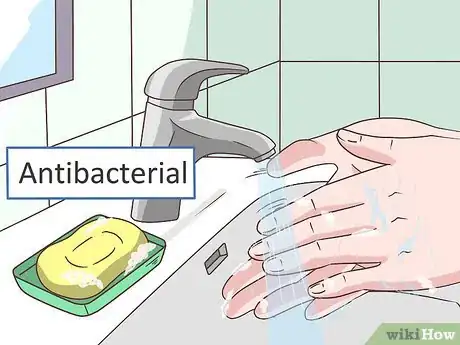



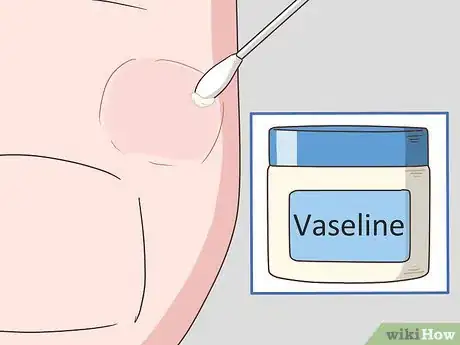







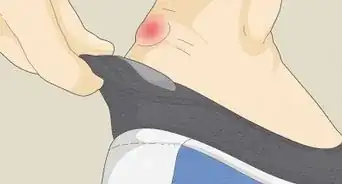
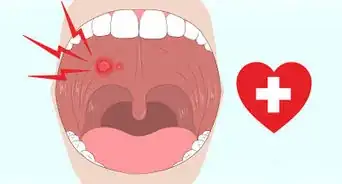
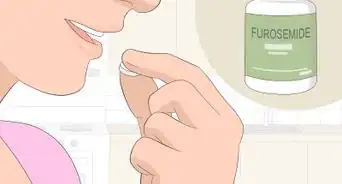
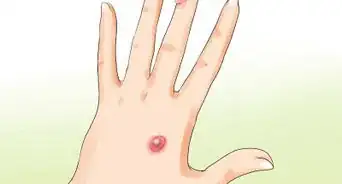
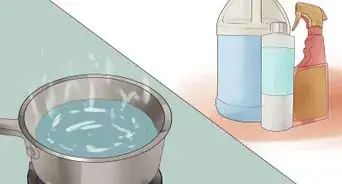

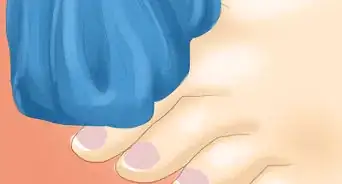
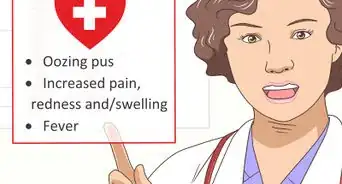

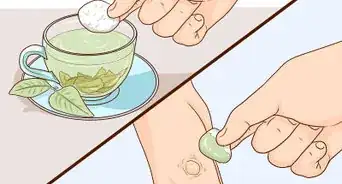
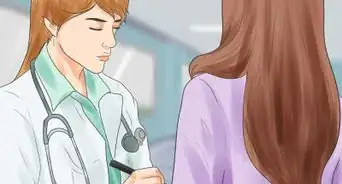
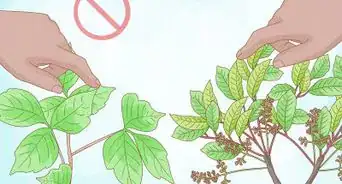
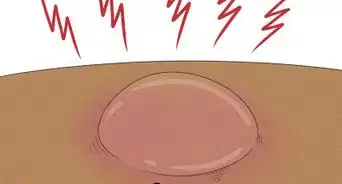
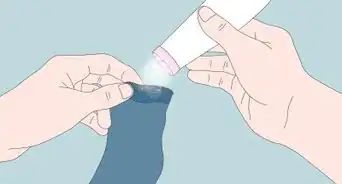











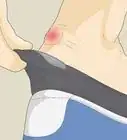
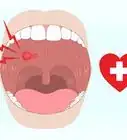
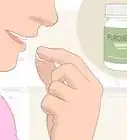
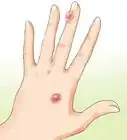



































Medical Disclaimer
The content of this article is not intended to be a substitute for professional medical advice, examination, diagnosis, or treatment. You should always contact your doctor or other qualified healthcare professional before starting, changing, or stopping any kind of health treatment.
Read More...